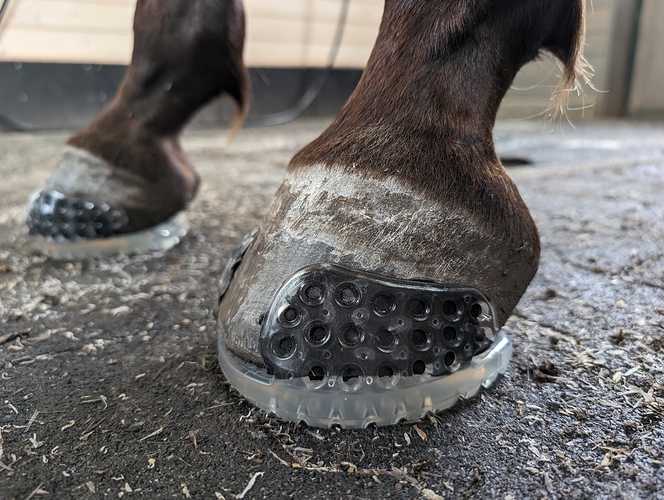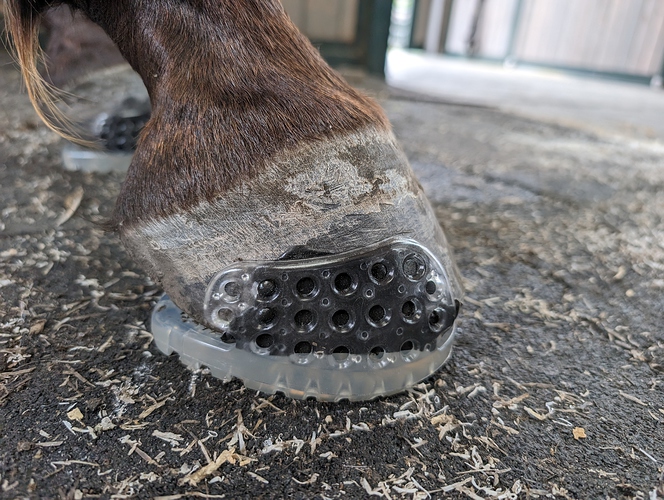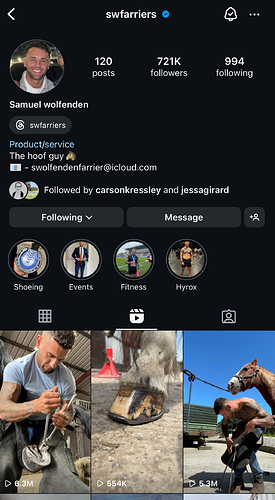It depends a lot on the shoe. For horses with truly wonky feet that don’t even remotely resemble one of the pre-made shapes, you can buy the shoes without tabs, grind them to the shape you want, and weld on tabs or nail on the shoes.
I use my angle grinder or belt grinder to shape all of my shoes. I add a larger breakover and adjust the shape of the heels.
Some of the composites come with spring steel cores that can be shaped with a hammer.
I know many folks use hind patterned shoes for front feet and vice versa; this is one way to accommodate wonky-shaped feet. I have horses in different sized shoes on each foot, and some horses with a hind pattern of one size on one foot and a front pattern of a larger size on the other.
If you have flaring or other distortion that can’t be trimmed out, you’ll want to use the Versa Grip Glues or the EasyShoe Speeds. Those cuffs are designed to be used with acrylic or urethane glue, which allow you to fill as much space as you need to with the glue. Superglued shoes are not a great fit for horses with flares since you can’t build height with superglue. But you can fill a LOT of space with acrylic or urethane glue!
You can (and really should, for proper breakover) heat the tabs of any of these shoes to soften them so you can set the shoes back further to achieve 50/50 around center of rotation.
You can trim out the frog support to create a rim shoe (not my advice, but it’s an option!), just cut off the tip, add a rim pad to the shoe to remove frog pressure, etc. You can box in the heels more with a grinder to make them smaller, or try a different shaped shoe if you have a horse with really wide heels and a narrow toe.
It’s definitely a different process than traditional farriery in the way you approach fitting the shoe to the hoof. These shoes are designed to come with enough material to allow the HCP to grind off as much as they want for the application they want for that horse.


 ) and they were off after a few steps.
) and they were off after a few steps.  The tape came off of the feet and the shoes, so I didn’t think there’s any chance it’ll work. Maybe a stronger tape? Anyone have suggestions?
The tape came off of the feet and the shoes, so I didn’t think there’s any chance it’ll work. Maybe a stronger tape? Anyone have suggestions?


 . I know once you get the method down it becomes easier, but the reality is I don’t have the bandwidth to get there right now!
. I know once you get the method down it becomes easier, but the reality is I don’t have the bandwidth to get there right now!

